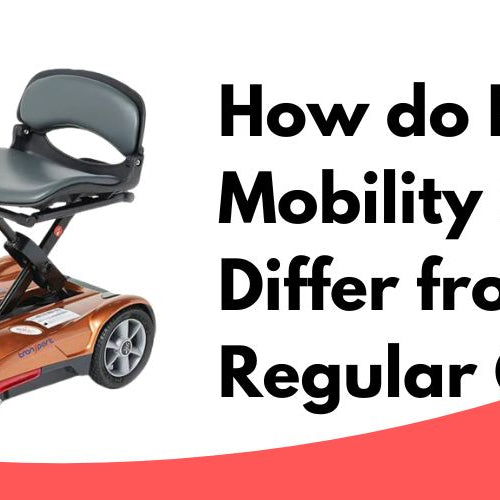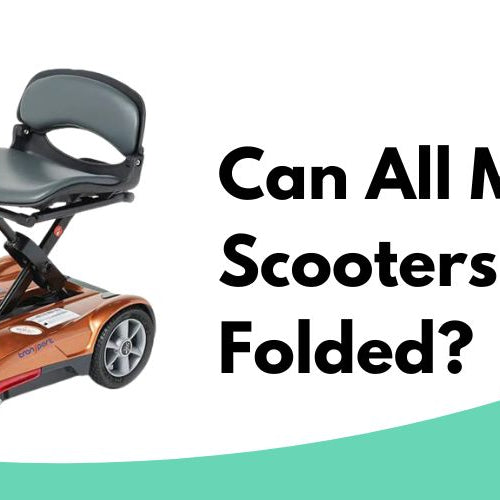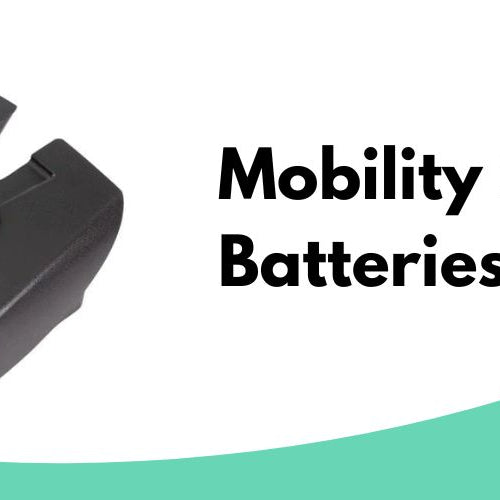Electric mobility scooters have become a popular mode of transportation for many individuals, particularly those with limited mobility or physical disabilities. As their popularity has soared, questions regarding their legality have arisen, with users wondering if they are allowed in public spaces and what rules or regulations they must adhere to. To better understand the legal landscape surrounding these scooters, it's essential to dig into specific regulations in each state, as well as federal guidelines that may influence their use.
In the United States, the majority of states have some form of electric scooter legislation. While each state has its own specific rules, generally, mobility scooters are classified as mobility aids allowing them on sidewalks, pedestrian walkways, and other areas designated for pedestrian use 1. The minimum age for riding electric scooters varies across states, with some states requiring users to be 12+, while others require the rider to be 16+2. Federal guidelines, such as the Americans with Disabilities Act (ADA), also provide regulations to ensure that people with disabilities have equal access to public spaces and facilities3.
While the above information serves as an overview of the legal considerations for electric mobility scooters, it's critical to familiarize oneself with the specific laws in each state to ensure legal and accurate use of these scooters. State legislatures may have varying speed limits and usage restrictions, so it's essential to remain informed and compliant with the law to avoid potential fines, penalties, or legal complications.
Electric Mobility Scooters: Definition and Purpose
Electric mobility scooters are battery-powered vehicles designed to assist individuals with mobility impairments by providing a convenient, safe, and accessible means of transportation. These scooters are comprised of various components that work together to ensure smooth and comfortable rides for users with limited mobility.
Key Components
-
Battery: The battery powers the scooter and typically runs on a 24V system, consisting of two 12V batteries connected in series. It requires regular charging to ensure optimal functionality.
-
Motor: The motor delivers power to the wheels, enabling the scooter to move at various speeds, depending on the model and user's preference.
-
Tires: Mobility scooters have two or more wheels, with some models featuring larger tires for better stability and traction on different surfaces.
-
Seat and controls: The seat is designed for comfort and ergonomic support, while the controls (such as a throttle, brakes, and steering mechanism) are within easy reach of the user, ensuring effortless maneuverability.
Benefits for Users
Electric mobility scooters offer several advantages to users, including:
-
Increased Independence: Individuals with limited mobility can navigate their surroundings without relying on others, fostering a sense of autonomy.
-
Safety: These scooters are designed with safety features like low center of gravity, speed limits, and brakes, ensuring secure rides for users.
-
Comfort: With cushioned, adjustable seats and an intuitive design, users can travel in comfort and ease while using an electric mobility scooter.
-
Accessibility: Many public places like shopping centers and parks have provisions for electric scooter usage, making it easier for users to visit and engage in various activities.
In regards to the legality of electric mobility scooters, it is important to confirm the specific regulations and requirements within your region. Generally, electric mobility scooters are legal in most places, as they provide essential support and assistance to individuals with mobility impairments. Some areas may require users to register their scooters, while others may have certain restrictions on where they can be ridden. Be sure to familiarize yourself with local laws and guidelines to ensure safe and legal use of your electric mobility scooter.
Legality of Electric Mobility Scooters
Electric mobility scooters, also known as power-operated vehicles (POVs), are popular among individuals seeking a convenient and efficient means of transportation. However, some potential owners may be concerned about their legality in various parts of the world, specifically in the United States, Europe, Australia and New Zealand, and Asia. This section aims to provide a brief overview of the legality and regulations surrounding electric mobility scooters in these regions.
United States
In the United States, electric mobility scooters are legal under the Americans with Disabilities Act (ADA). As per the ADA guidelines, these scooters can be used on sidewalks, public transportation, and other areas where pedestrians are allowed. Additionally, electric mobility scooters typically fall under the same rules and regulations as bicycles, with certain restrictions applied to the maximum speed, which varies from state to state. For example, Colorado allows electric scooters to have a maximum speed of 30 mph and must follow the same parking and no-ride area rules as bicycles.
Europe
European countries have varying regulations for electric mobility scooters. In the United Kingdom, for instance, electric mobility scooters are permitted for use on public roads, sidewalks, and designated cycling paths. Users must be at least 14 years old, and the scooters must be equipped with a motor, which does not exceed 500 watts. Meanwhile, Germany permits electric mobility scooters on sidewalks and pedestrian zones, provided they travel at walking speed. Each country may have its specific regulations, so it is advisable to research local laws before using electric mobility scooters.
Australia and New Zealand
In Australia, electric mobility scooters are subject to various state laws, with each state imposing its regulations. Generally, these scooters are allowed to be used on sidewalks, indoor areas, and public spaces, provided they follow the maximum speed limits and other requirements outlined by each state law. In New Zealand, electric mobility scooters fall under the Low Powered Vehicle category and are allowed on sidewalks and roads. However, users must observe a maximum speed limit of 12 km/h on sidewalks and 50 km/h on roads.
Asia
Laws for electric mobility scooters in Asian countries also vary significantly, with regulations depending on the specific country. In Japan, for example, electric mobility scooters are classified as Electric Power Assisted Cycles (EPACs), which require a motor output of no more than 250 watts and a maximum speed of 24 km/h. In other countries, such as India and the Philippines, regulations for electric mobility scooters are still developing. As a result, prospective users should consult local authorities to determine the applicable laws and regulations in their respective countries.
In summary, while the legality and regulations of electric mobility scooters vary across countries and states, most regions allow their usage in public spaces, provided they adhere to specific requirements, such as restrictions on speed and power output. It is highly recommended that potential users research local regulations before using electric mobility scooters to ensure compliance and enjoy their benefits without any legal concerns.
Rules and Regulations for Electric Mobility Scooters
Speed Limits
Electric mobility scooters are subject to different speed limits depending on the state or jurisdiction they're used in. In some states, electric scooters are allowed to reach a maximum speed of 30 mph, while in others, the speed limit is lower. When using electric scooters on sidewalks, riders should keep their speed below 6 mph to ensure the safety of pedestrians and yourself.
Age Requirements
The age requirements for using electric mobility scooters also vary by state. Some states have a minimum age requirement of 16+, while others may have different age limits. For example, riders in Utah need to be at least 15 years old, whereas in Virginia, the minimum age is 14. Michigan and Minnesota have a lower age requirement, allowing riders as young as 12 years old to use electric scooters.
License and Insurance
In most states, electric mobility scooters are treated like bicycles, meaning that a driver's license is not required. However, some states may have additional requirements or restrictions, so it is essential to familiarize yourself with your state's specific laws before riding an electric scooter. While insurance is not typically required, it is highly recommended to have coverage in case of accidents or damage.
To ensure the legality and safety of using an electric mobility scooter, riders should always adhere to their state's specific rules and regulations. By observing speed limits, age requirements, and acquiring proper licensing and insurance if required, you can enjoy the benefits and convenience of electric scooters while staying within the bounds of the law.
Safety Considerations and Responsible Use
When it comes to electric mobility scooters, there are a few essential safety considerations and responsible usage guidelines that riders must be aware of. In this section, we will explore the importance of proper care and wearing protective gear.
Proper Care
Proper care and maintenance of an electric mobility scooter are crucial for ensuring its safe operation and prolonging its lifespan. Some of the steps for maintaining an electric mobility scooter include:
- Inspecting the scooter regularly for any damage or wear
- Keeping the tires properly inflated and replacing them when necessary
- Ensuring that the brakes are functioning correctly and addressing any issues promptly
- Checking the battery regularly and charging it as per the manufacturer's recommendations
- Cleaning the scooter to remove dirt and debris that may affect its performance
Additionally, users should always adhere to the manufacturer's guidelines for the safe operation of the scooter, which include abiding by the local and state laws governing the use of electric scooters on public roads and pathways.
Wearing Protective Gear
Wearing appropriate protective gear is essential for the safe operation of electric mobility scooters. Some of the recommended precautions include:
- Wearing a properly fitted helmet to protect the head from potential injuries in case of an accident
- Using elbow and knee pads to minimize the risk of injury to the joints
- Wearing high-visibility clothing or attaching reflectors to the scooter, especially when riding in low light conditions
Following these safety considerations and practicing responsible use will help ensure the longevity of the electric mobility scooter while minimizing the risks associated with riding. Remember to always be aware of your surroundings, follow traffic rules, and above all, prioritize safety over convenience.
Selecting the Right Electric Mobility Scooter
When looking for an electric mobility scooter, there are several factors to take into consideration to make the best choice for your needs. In this section, we will discuss important features to consider and top models available in the market.
Important Features to Consider
-
Weight Capacity: Choose an electric mobility scooter that supports the rider's weight. For those with higher weight requirements, consider Heavy-Duty mobility scooters with weight capacities up to 600 lbs.
-
Turning Radius: For indoor use, select a scooter with a tight turning radius. Models like the Zero Turn 8 or the Go-Go Elite Traveller can easily navigate through doorways and around corners.
-
Three-wheel or Four-wheel Design: Three-wheel scooters offer better maneuverability, while four-wheel scooters provide increased stability. Evaluate your needs to determine the most suitable option.
-
Battery Life and Range: Assess your daily travel needs to select a scooter with adequate battery range. Long-range scooters with quick-charge features, like the Vive Health's Best Selling scooter, can ensure you won't be left stranded.
-
Terrain Capabilities: If you plan to use your scooter outdoors or on uneven terrain, consider an all-terrain mobility scooter with appropriate ground clearance, such as the Vive Mobility Series A.
Top Models
-
Vive Health's Best Selling Long-range Scooter: This four-wheel scooter offers an easy-to-use control panel, powerful motor, and quick-charge battery. Its adjustable speed dial adds to its appeal.
-
Zero Turn 8: Ideal for indoor use, the Zero Turn 8 has a tight turning radius and fits easily through doorways and around corners.
-
Go-Go Elite Traveller®: This compact scooter is perfect for maneuverability in tight spaces, and its simple disassembly makes it easy to travel with.
-
Vive Mobility Series A: For those in need of an all-terrain option, the Vive Mobility Series A boasts a 3.5" ground clearance and can navigate both indoor and outdoor environments with ease.
Before making a decision, carefully assess your needs, mobility limitations, and travel requirements to ensure you select the right electric mobility scooter for you. Don't rush, and don't hesitate to consult with a professional if needed.






Leave a comment